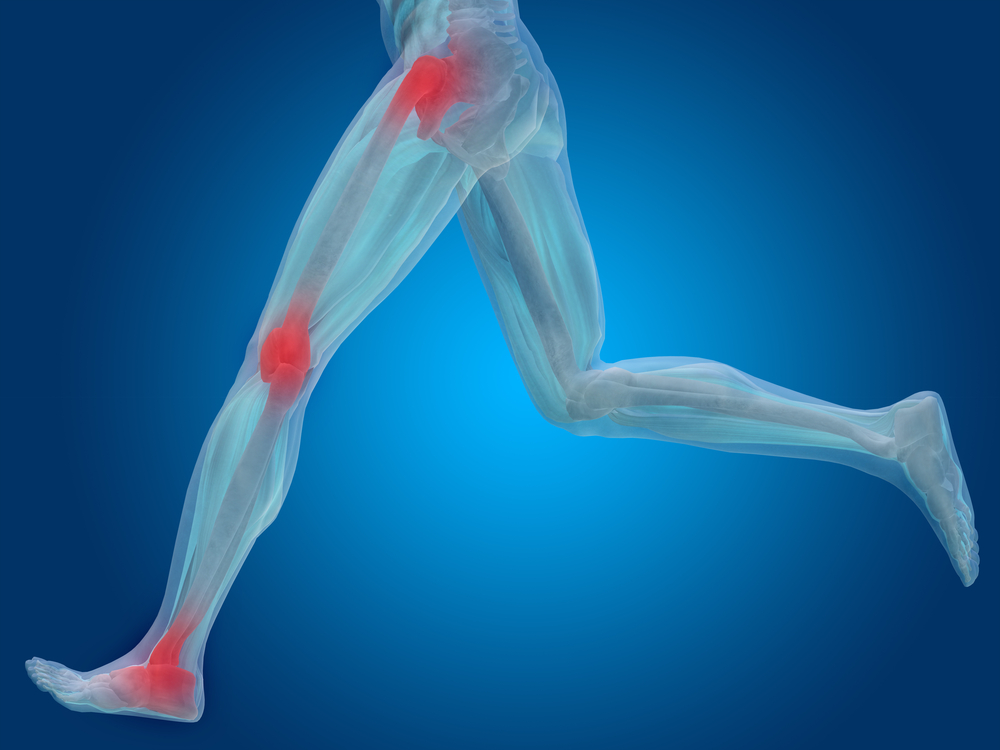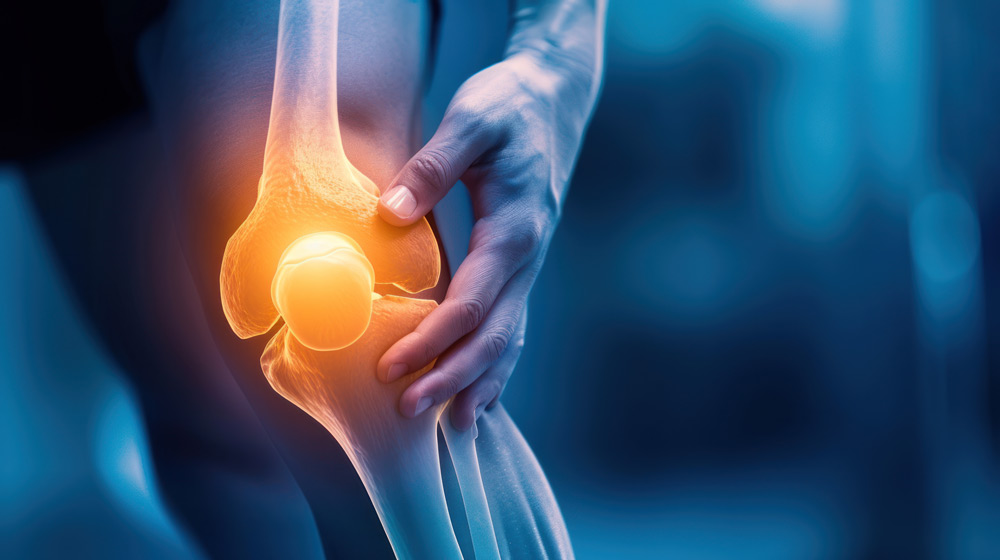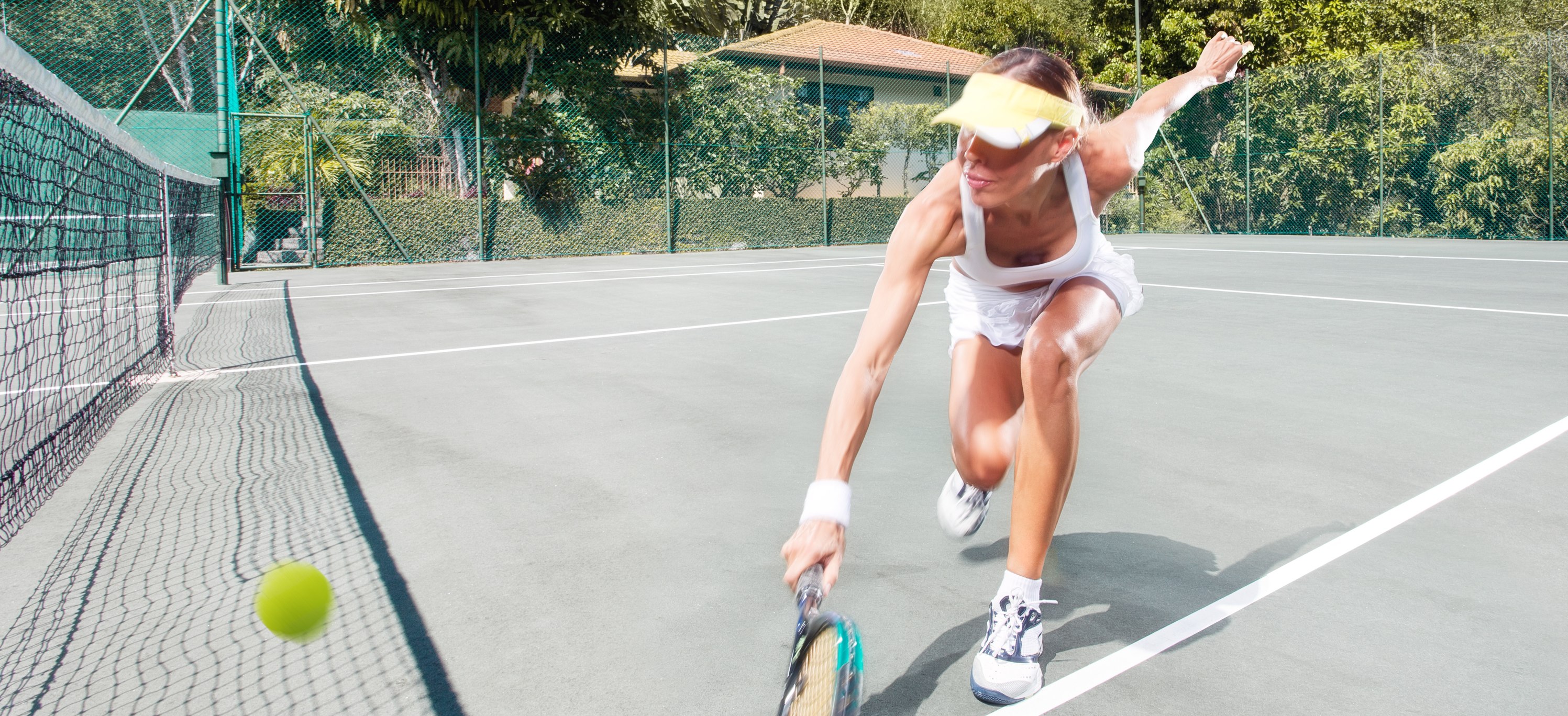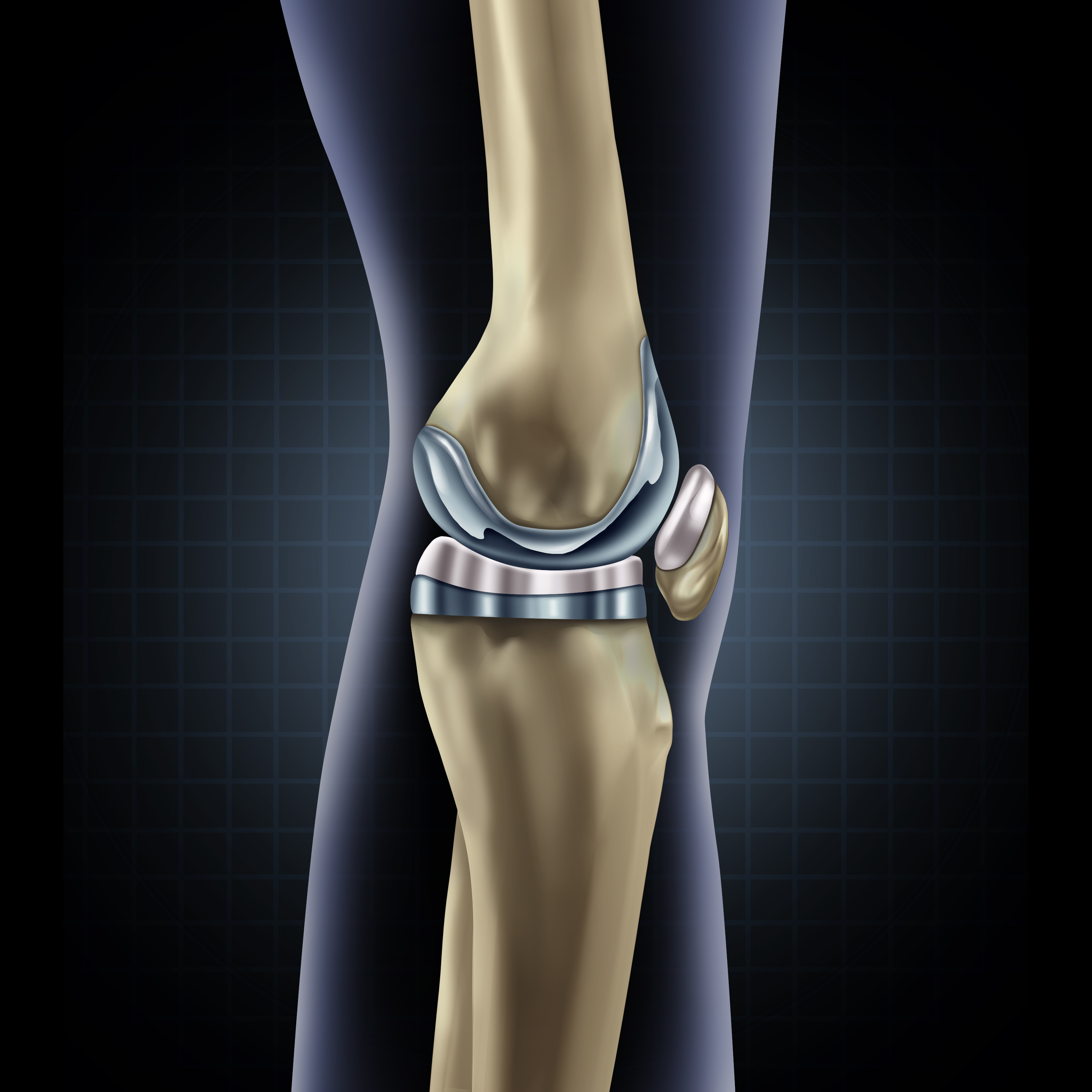KNEE PAIN
Understanding knee anatomy and common problems
If you have knee pain, rest assured you are far from alone. Each year, 6 million Americans head to the doctor for knee pain issues. This translates into 2.5 percent of the U.S. population sitting in doctors' offices for relief of knee pain. Even more people try to self-diagnose and treat themselves with pain pills, anti-inflammatories and home remedies.
A U.S. study found that 18% of men aged 60 years and older reported knee pain, and that percent goes up as we age. Women experience knee pain even more than men.
But it's important to remember pain symptoms are typically a warning mechanism to our brains that something is wrong and needs to be addressed. Simply masking pain symptoms with drugs, or even just anti-inflammatories, can have long-term impacts on internal organs and one's lifespan. Masking symptoms can also encourage the person to further overuse and injure their knee joint.
Consequently, it's important to address knee pain symptoms early on to determine if there are non-surgical or surgical treatment options that can relieve pain symptoms without drugs or pills.
Step #1 is understanding the complex knee joint and how it works so you can better relate to treatment options that may be recommended by a knee specialist.

What causes knee pain?
Any mechanical device can and will fail if placed under excessive strain. That could be a fall down stairs or banging the knee into a dashboard during a car accident. But again, accidents and falls represent a relatively small percent of knee pain cases.
The vast majority of knee pain issues develop over a period of years. In these cases, the knee becomes like a creaky or unstable hinge that doesn't get better, either because components in the knee are weak or unstable, or the lubrication in the joint and bone surface has been eroded over time.
That's the bad news. The good news is that of all knees that hobble into doctors' offices every year, only 20 percent will need surgery. Of those that don't need surgery, many can get better with time and new non-surgical treatment options.
In some cases, anti-inflammatories and specialized exercises increase range of motion, flexibility, strength, and resistance to future knee strain are usually prescribed. Sometimes, knee braces are also used.

Knee anatomy
The knee is a complex mechanism that absorbs shock as we jump and is extremely flexible, permitting a change in direction while running at high speeds. The knee joint is composed of ligaments, which provide support, and muscles for strength.
The healthy young knee joint is a lubricated mechanism that functions reliably unless twisted, bruised, or broken. For example, of all the areas treated by orthopedic surgeons, the knee is the most commonly injured joint, representing 26 percent of orthopedic visits, followed by the spine (17 percent) and hip (15 percent).
Some cases of knee pain are caused by trauma, such as a fall or a car crash. According to the American Academy of Orthopedic Surgeons (AAOS), over a lifetime, each American will suffer two fractures. Many of them will occur at the knee.
However, trauma or fracture represents a small percentage of knee problems. The majority result from repetitive wear and tear. In these cases, the cartilage or joint surfaces are slowly damaged over time. One type of chronic injury is arthritis, which might be thought of as a "rusting" of the knee joint. It causes pain and robs the knee of flexibility. Indeed, half of all knee pain may be tied in some way to arthritis.
Cartilage is a natural lubricating tissue that helps your joints move smoothly. When cartilage begins to break down with age or injury, you experience bone-on-bone friction, which causes symptoms like inflammation, knee pain, stiffness, or inability to move the joint without extreme pain.
Many of the causes of osteoarthritis are out of a person's control, for example, heredity or accidental injury. But you can make lifestyle changes to reduce your risk of arthritis, ligament strain and a painful knee.

What things could cause knee pain?
Tendons are cords of strong, fibrous tissue that connect muscles to bone. Muscle power is transferred across tendons to bones. The primary muscle groups associated with the knee are the quadriceps and hamstring muscles. These muscles are at work when the knee is extended, flexed, or rotated.
The easiest way to understand how the muscles in the leg operate is to imagine two large rubber bands, one that runs down the front and another that runs down the back. The front rubber band pulls the leg straight, or extends it. The rear rubber band causes the leg to do the reverse, or flex.
The quadriceps mechanism is the strongest muscle in the leg, allowing us to walk and run. The quadriceps mechanism includes:
- Quadriceps muscle
- Quadriceps tendon above the patella
- Patella
- Patellar tendon

The quadriceps tendon connects the quadriceps muscle to the patella, while the patellar tendon connects the patella to the tibia. The hamstring muscles at the back of the thigh, as well as the calf muscles, enable the knee to flex.
Working together, the muscles, tendons, and ligaments of the knee work fluidly. Turn to any sports channel on a Sunday afternoon and pay attention to the slow-motion videos of a wide receiver running a complex pass route, jumping through the air to snatch a football, and then changing directions and accelerating into the end zone. Or watch a skier charge through a slalom course, knees pumping as they work the edges of their skis through the gates.
That's when everything is working perfectly. Things change after a wide receiver takes a blow to the side of the knee, or when that downhill skier catches an edge and tumbles.
The Most Common Knee Problems
Knee pain can start with issues from overuse or strain. Most knee problems come from the following areas:
Pain in the kneecap. Those with kneecap pain typically notice an increase in pain when going up or down stairs, when running downhill, or even while sitting.
Torn meniscus. The bottom of the femur (thigh bone) and the top of the tibia (shin bone) come together in the knee joint and are covered by cartilage, which enables the bones to glide against each other with a minimal amount of friction. But if the knee is twisted or banged, the cartilage can become damaged or loosened out of its normal position. A common symptom of this type of injury is that the knee may "catch" or grind at a certain point as it moves through its normal range of motion.
Ligament problems. If you think of the knee as a hinge between the upper leg and lower leg, it is the awesome work of the supporting muscles, ligaments, and tendons to make sure that it is supported and working properly-often while the leg is twisting, turning and absorbing shock from jumping. There are four key ligaments that can be injured in the knee:
Anterior cruciate ligament (ACL) is often the victim of a non-contact injury, where the knee is twisted while the foot is planted. You may feel a pop, and the whole knee may give way.
Posterior cruciate ligament (PCL) injuries can be caused by a blow to the knee or when the knee is forced backward.
Medial collateral ligament (MCL) can be injured from a blow to the outside area of the knee.
Lateral collateral ligament (LCL) injury can be caused by a blow to the inside area of the knee.
Tendon problems. Sometimes, the tendons that attach the kneecap (patella) to the shinbone (tibia) can become inflamed.
Arthritis. Aside from pain from ligament and tendon problems, osteoarthritis accounts for a large percentage of knee pain symptoms and is the most difficult to treat. The incidence of an arthritic joint goes up with age.
Osgood-Schlatter disorder. This is an overuse problem where the quadriceps tendon causes inflammation in the knee. This disorder is more common in children and teens.

Why are ligaments so easily damaged?
Consider the average size of the ACL or PCL. They're smaller than you might think. The ACL is about one centimeter wide and has a range of eight to thirteen millimeters wide, while the PCL is thirteen to sixteen millimeters. Both of these ligaments are only about four centimeters in length.
The sound of an ACL tearing is distinctive, and the feeling is unforgettable. Here's what happens. The anterior cruciate ligament tightens as the knee is twisted. But when the knee is forced past the normal straightened position, or when the tibia is twisted excessively outward on the femur, or frequently when the knee is struck from the side, the ACL may be stretched beyond its breaking point. Those nearby will notice a distinctive popping sound, and the afflicted individual will experience a sudden burst of pain and instability. Often, the knee buckles, causing a fall to the floor. Swelling appears promptly. Swelling and pain may subside, but after returning to sports, there will be a sense of instability with any twisting maneuver. While not commonly the case, bleeding may occur in the knee. Because the knee is now rendered unstable, repeated injury can now damage the menisci or articular cartilage and ultimately lead to arthritis. Now that you have an understanding of the gears and moving parts that make up the knee joint, we start to understand what can go wrong.
Knee - Strains, Sprains, and Tears
Strains are common and occur when a muscle is overworked or overstretched. When you suddenly dive into a new activity or exercise program, you often strain a muscle or tendon by overworking it. A strained muscle is what we sometimes call a “pulled” muscle. A strain is characterized by a sharp pain or “stitch” at the time of injury. The area becomes sore and stiff within a few hours or moments of straining. Pain accompanies further movement but often subsides within days. Strains often occur when, after months of inactivity, we throw ourselves into a new exercise routine. If you are out of shape and haven't carefully stretched your muscles, think twice before zealously jumping on the treadmill and powering it up to a high-speed performance level. When the machine starts racing, your legs might race right out from under you, and in that case, you'll be lucky if a strain is the only injury suffered. Sprains are more serious than strains. A sprain occurs when a ligament is overstretched or partially torn. Since ligaments hold bones together, their close proximity to the bone may lead to the suspicion of a fracture. The signs of a sprain include joint pain, inflammation, tenderness, and swelling. These may be associated with black and blue discoloration. Sprains in the knee involve partial tears to the ACL, PCL, MCL, and LCL. The location of the injury should clarify any confusion over whether it's a sprain or strain. Strains occur in the muscles of the neck, back, thighs, and calves. Sprains are found around joints such as the knees, ankles, or wrists. Tears are more severe than strains or sprains. When muscles, ligaments, or tendons are torn, they are actually disrupted. The torn ends grossly disrupt the continuity of their structure.
Picture a tall radio tower with four main cables anchoring it to the ground. Your knee is similar. It has four main ligaments that hold it in place: ACL, PCL, MCL, and LCL. Unless you are a football player who is tackled roughly around the knees, which can tear any of these four, 90% of the time the ACL - anterior cruciate ligament - is the single ligament that most often tears. It's the one that weaves from the front of the shin, through the kneecap, and attaches to the thighbone.
If you are playing tennis, for example, and you stretch to reach a ball and hear a pop, chances are you tore your ACL. The sensation is then followed by a feeling of instability, wobbliness, pain, and sometimes nausea. You typically have no doubt that something terrible has gone wrong, and you stop playing. You have officially had a bad day.
If the ACL is partially torn, non-surgical treatment, customized therapy, and rest can, in some cases, heal the tear.
A complete tear, however, needs surgery to repair it. During surgery, the knee surgeon harvests a tendon from either your hamstring or your patellar tendon, weaves a new ACL into place, and anchors it to the femur and tibia. The good news is that ACL surgery is somewhat common and done in day surgery. With some rehab and customized exercises, you'll be back in action within a couple
Pain from ACL Tears
The anterior cruciate ligament (ACL) is deep within the knee. It crisscrosses the posterior cruciate ligament (PCL) and keeps the tibia from sliding too far forward in relation to the femur. The PCL does the opposite. It prevents the tibia from sliding excessively backwards. The PCL is further supported by two minor ligaments: the ligaments of Humphry and Wrisberg. The ligaments that provide sideways stability to the knee are the medial collateral ligament (MCL) and lateral collateral ligament (LCL). These ligaments limit side-to-side motion.
When the ACL is torn, it is often because the leg rotates while the foot stays planted on the ground. Oftentimes, an ACL tear is accompanied by a loud popping sound from the knee, and the support of the knee gives way. A posterior cruciate injury happens when the knee is forced backwards or when it receives a hard impact. A medial collateral ligament injury most commonly occurs when the knee is hit from the outside, while a lateral collateral ligament injury occurs when the knee is impacted from the inside.
Pain from Meniscus Tears
To keep the top of the shin (tibia) from rubbing on the bottom of the thighbone (femur), Mother Nature provided us with meniscus tissue that acts as a shock absorber pad and lubricant between the bones. But abuse and excessive wear and tear can tear this protective tissue. That, again, may require a minimally invasive surgery to correct.
Meniscal tears can occur at any age. In the younger age group, they are usually sports-related and result from violent trauma. Contact sports like football account for a large number of tears. The type of movement that most often causes a meniscal injury is one in which the foot is firmly planted on the ground while the knee is twisted. Shoes with cleats often contribute to this type of injury by anchoring the lower leg into the ground and preventing it from moving with the knee.
Along with other sports that call for cutting, pivoting, or decelerating, basketball and tennis can also lead to meniscal tears. Traumatic meniscal injuries may also be accompanied by the tearing of a ligament, such as the anterior cruciate ligament.
For those forty and older, meniscal tears are less likely to be due to a sports injury. With age, the meniscus weakens and becomes more fragile. Individuals in this age group can tear a meniscus by performing simple activities, such as squatting.
Meniscal tears come in a variety of sizes and shapes. Often, torn fragments lodge between the tibia and femur, causing mechanical obstruction and pain. When this happens, the knee is said to "lock up," which means that the patient is unable to extend the knee fully outward. Fluid accumulates as a result of an inflammatory process, and walking becomes difficult.
Menisci lack a blood supply except at their outer rim. Once torn, they heal poorly, if at all, and function is lost. Symptoms often vary in intensity depending on the level of one's activity.
Fractures
A bone can break for a number of reasons. A traumatic injury, such as a car accident, can cause a bone to break. Other causes for bones breaking can be "stress" fractures, where a bone is used repetitively and, because of compression, it breaks.
Dislocation
Sometimes, especially while doing something physically strenuous, we can throw a joint out of alignment with the bone. Although nothing breaks, the alignment is off. This is called dislocation.
Copyright © 2025 Prizm Development • Centers of Excellence for Better Healthcare
Dr. Robert Hannahan is a board-certified anesthesiologist who has specialized in pain management for over 30 years in the Northwest Florida and South Alabama region. He has pain management offices across the Gulf Coast of Florida, including Panama City, FL; Port St. Joe, FL; Enterprise, Alabama; and Dothan, Alabama. Dr. Hannahan is referred pain patients that suffer from back pain, neck pain, knee pain, hip pain, cancer pain and diabetic neuropathy.
